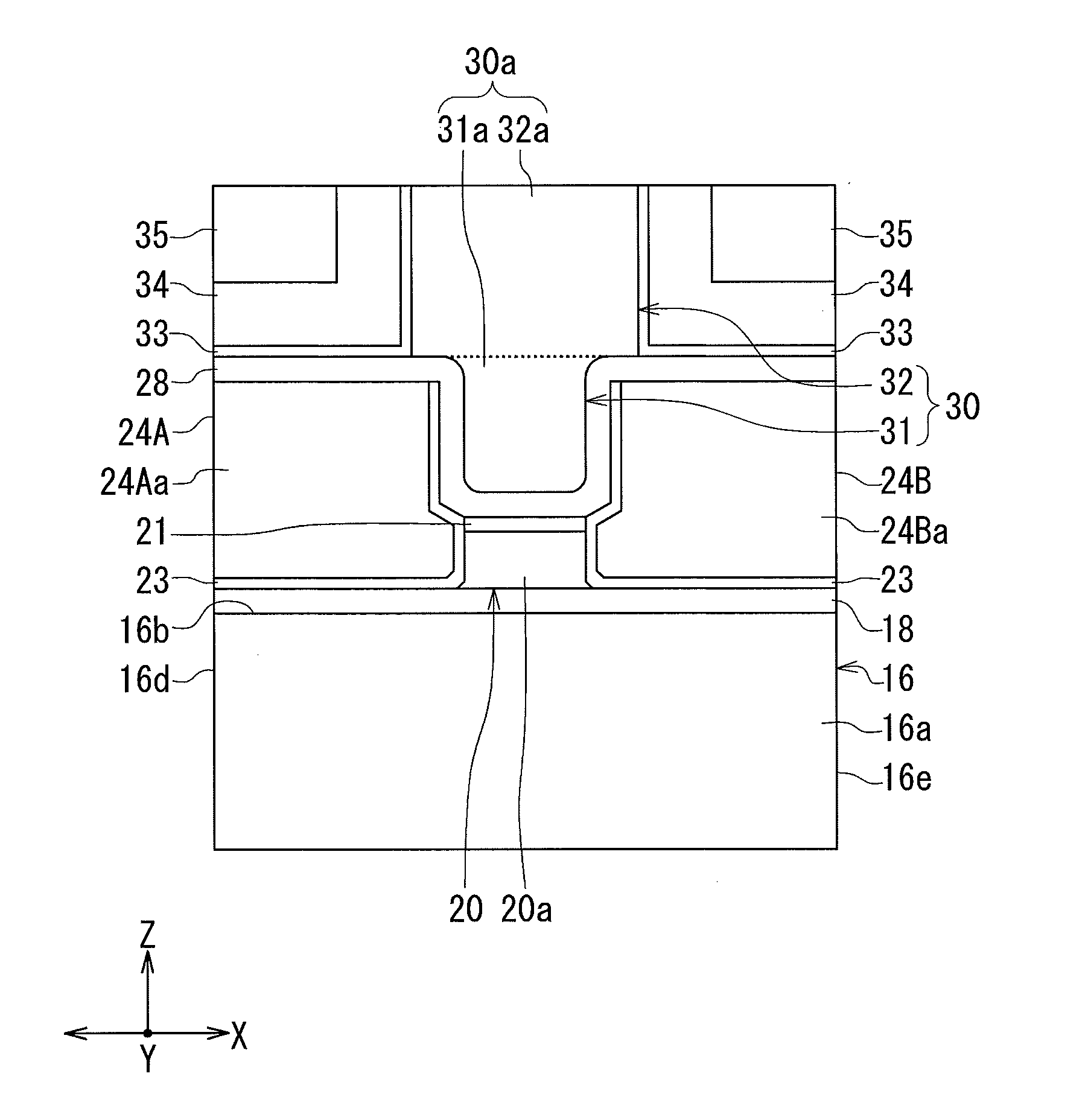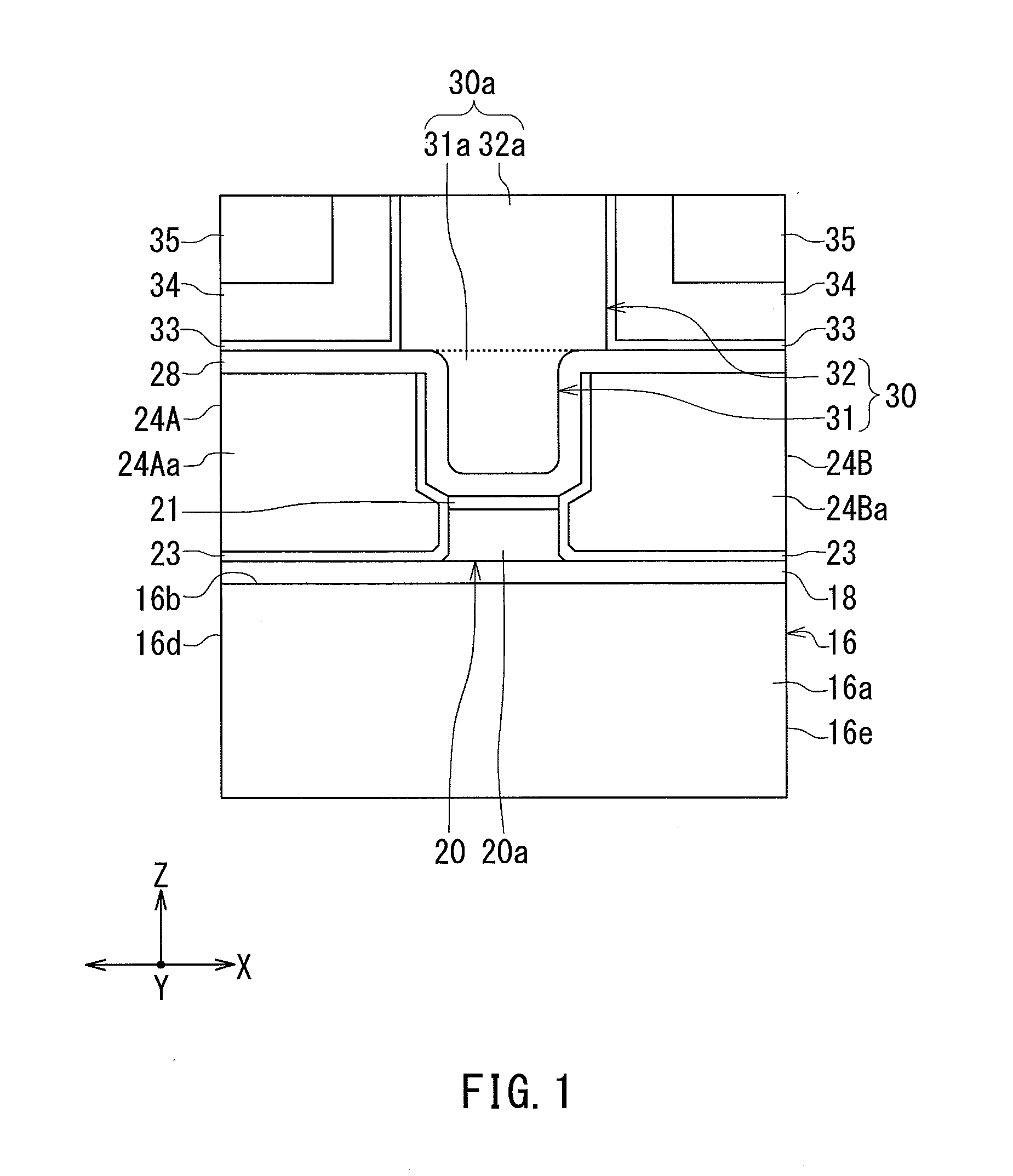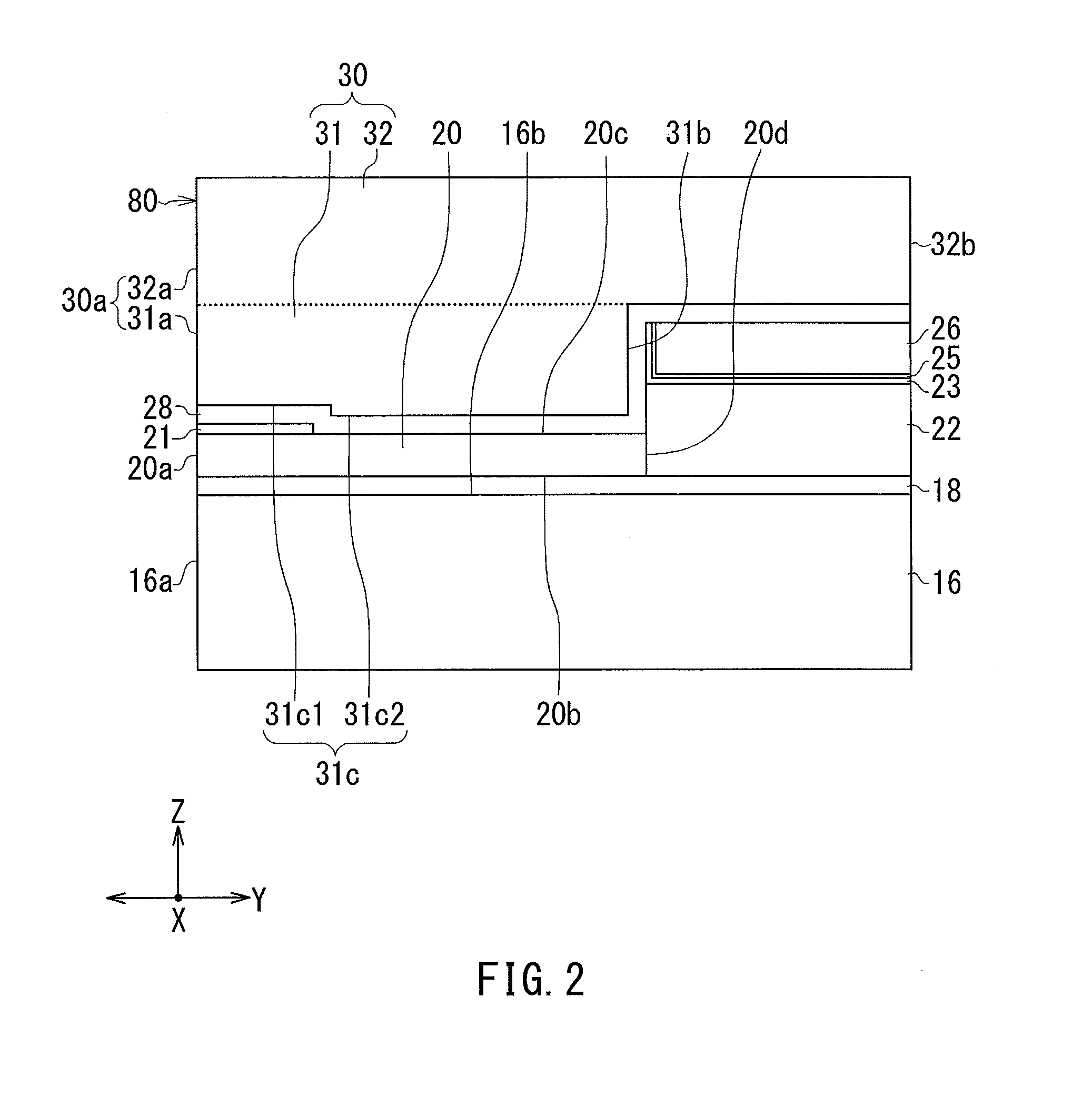Thermally-assisted magnetic recording head including a main pole, a plasmon generator and two side shields
a magnetic recording and magnetic technology, applied in the field of magnetic recording heads, can solve the problems of increasing the coercivity of the recording medium, reducing the thermal stability of the magnetic field, and difficult to perform data writing with the existing magnetic head, so as to reduce the width of the track
- Summary
- Abstract
- Description
- Claims
- Application Information
AI Technical Summary
Benefits of technology
Problems solved by technology
Method used
Image
Examples
first embodiment
[0079]Preferred embodiments of the present invention will now be described in detail with reference to the drawings. First, reference is made to FIG. 1 to FIG. 8 to describe the configuration of a thermally-assisted magnetic recording head according to a first embodiment of the invention. FIG. 1 is a front view showing the main part of the thermally-assisted magnetic recording head. FIG. 2 is a cross-sectional view showing the main part of the thermally-assisted magnetic recording head. FIG. 3 is a plan view showing a core, a plasmon generator, a first side shield and a second side shield. FIG. 4 is a plan view showing a main pole, the first side shield, the second side shield, a first heat sink and a second heat sink. FIG. 5 is a cross-sectional view showing the configuration of the thermally-assisted magnetic recording head. FIG. 6 is a front view showing the medium facing surface of the thermally-assisted magnetic recording head. FIG. 7 is a plan view showing a first layer of a c...
second embodiment
[0188]A thermally-assisted magnetic recording head according to a second embodiment of the invention will now be described with reference to FIG. 21. FIG. 21 is a front view showing the main part of the thermally-assisted magnetic recording head according to the present embodiment. In the present embodiment, the first end face portion 31a of the front end face 30a of the main pole 30 is shaped differently than in the first embodiment. More specifically, in the present embodiment, the width of the first end face portion 31a in the track width direction (the X direction) increases with increasing distance from the near-field light generating surface 20a of the plasmon generator 20. Further, the first end face portion 31a has a first edge E1 closest to the near-field light generating surface 20a, and a second edge E2 located at the boundary between the first end face portion 31a and the second end face portion 32a. As shown in FIG. 21, the second edge E2 is longer than the first edge E...
third embodiment
[0200]A thermally-assisted magnetic recording head according to a third embodiment of the invention will now be described with reference to FIG. 28. FIG. 28 is a front view showing the main part of the thermally-assisted magnetic recording head according to the present embodiment. In the present embodiment, the first end face portion 31a of the front end face 30a of the main pole 30 is shaped differently than in the first embodiment. More specifically, in the present embodiment, the first end face portion 31a has a lower part closest to the plasmon generator 20, and an upper part located between the lower part and the second end face portion 32a of the front end face 30a of the main pole 30. The width of the lower part in the track width direction (the X direction) is substantially constant regardless of distance from the near-field light generating surface 20a of the plasmon generator 20, and is smaller than the width of the near-field light generating surface 20a in the track widt...
PUM
| Property | Measurement | Unit |
|---|---|---|
| temperature | aaaaa | aaaaa |
| size | aaaaa | aaaaa |
| thickness | aaaaa | aaaaa |
Abstract
Description
Claims
Application Information
 Login to View More
Login to View More - R&D
- Intellectual Property
- Life Sciences
- Materials
- Tech Scout
- Unparalleled Data Quality
- Higher Quality Content
- 60% Fewer Hallucinations
Browse by: Latest US Patents, China's latest patents, Technical Efficacy Thesaurus, Application Domain, Technology Topic, Popular Technical Reports.
© 2025 PatSnap. All rights reserved.Legal|Privacy policy|Modern Slavery Act Transparency Statement|Sitemap|About US| Contact US: help@patsnap.com



